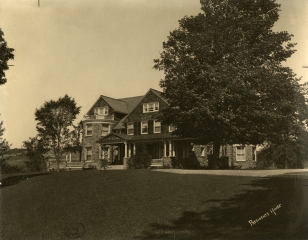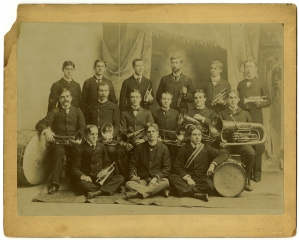be well-organized appeals in the form of the annual alumni fund.
The early years of the Bryan administration saw renovation and adaptation of four old buildings. Work on the dormitories, West, and East Halls, which Dr. Merrill had planned and to which the growing enrollment of the College gave urgency, was completed-West in 1910 and East, with a Commons for feeding 100 in the basement, a year later. At the termination of Colgate Academy in 1912, its facilities became available for other uses. Administrative offices were moved from the Library to the academy building, henceforth known as the Administration Building, and Taylor Hall, which the Academy fraternities had occupied, was taken over for the post office and the YMCA.
The long recognized need for an infirmary was met in 1913 through the generosity of Mrs. James C. Colgate whose contributions enabled the University to acquire and equip the former Phi Kappa Psi fraternity house on East Pleasant Street for this purpose,
Though the College, Seminary, and Academy each had its own chapel, the College chapel had become so crowded by 1915 that only a part of the student body could be accommodated. Plans for a new building were drawn by Harding and Seaver, architects of Pittsfield, Massachusetts, and a location chosen which would bring buildings together around the north quadrangle. The donor, Miss Mary Colgate, sister of James C. Colgate, who gave it in memory of their father, James B. Colgate, specified that it should be in the simple New England meeting house style. Construction began in the spring of 1917 and it was first used for the September 1918 convocation. Miss Colgate dedicated the building in June, 1920, and provided an endowment for its maintenance. Its symmetry and simple classical beauty have made a focal point on the Hill ever since.
By the early 1920’s the campus had grown into the park-like tract that its planners and creators, especially the landscape architect Ernest W. Bowditch, and Superintendent of Buildings and Grounds, James M. Taylor, had envisioned. The former died in 1918 and Dr. Taylor resigned two years later to be succeeded by Lt. Colonel James Ballantine, who had recently come to Colgate as Director of Military Instruction. Colgate’s buildings and grounds by 1922 had an estimated value of $1,100,000.
Though the size of the faculty had increased from 36 in 1908 to 48 in 1922 these figures are misleading since the first includes ,21 for the







